In pantries and cupboards, on counters and kitchen tables all over the country––regardless of household custom or background––there are a few things you can pretty much count on finding in common. A pair of salt and pepper shakers. A butter dish, perhaps. Cream and sugar for coffee service. But in recent years, almost unequivocally, you’re likely to find at least one bottle of extra virgin olive oil.
We have long used olive oil in the United States. In fact, evidence of the first olive trees indicates there were plantings in Southern California as far back as the mid-1800s, when Spanish missionaries began farming orchards and harvesting the fruit for oil.1 In recent decades, the discovery of olive oil’s myriad health merits have made it an enthusiastically embraced alternative to butter and other cooking liquids. Purported benefits include suggested efficacy at reducing the risk of Type 2 diabetes, relieving inflammation––even in potentially helping to prevent certain cancers. It’s rich in antioxidants, and of course, there’s the small fact that good quality olive oil is absolutely delicious.2
So it’s not surprising that in recent decades, growing consumer interest in food choices and health consciousness contributed to olive oil’s ubiquity in the United States. According to the American Olive Oil Producers Organization, the U.S. now enjoys 80 million gallons of olive oil each year.3
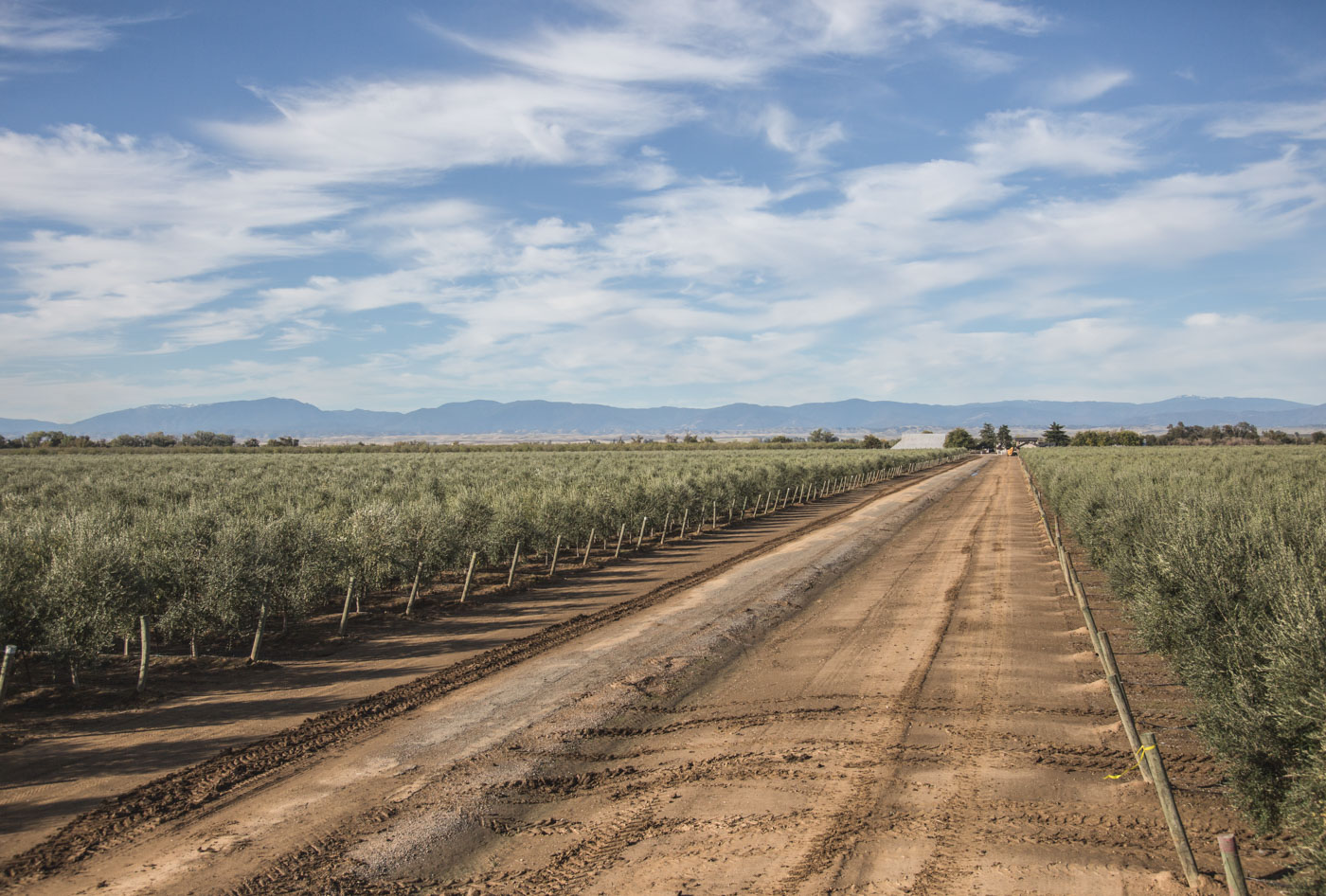

High quality oils have also historically been associated with a premium price tag, thanks to costs associated with hand-harvesting and importing from European countries like Spain and Italy. And like many staples that follow a similar trajectory, as its popularity exploded, olive oil became quickly commoditized and subsequently, quality suffered. Given the sheer amount of oil used at home and in commercial kitchens, it was low-hanging fruit for cost saving corner cutting. Unfortunately, much of the oil being used in the United States is still of questionable quality––largely imported, often afflicted by rancidity, and in many cases impure or inauthentically “extra virgin.” Fraudulency has long gone undetected due to consumer unfamiliarity with off-flavors and other indicators. And though this is a persistent issue, the level of awareness has been heightened in those paying closest attention to the industry. Educated consumers are now seeking better ingredients and chefs are passionate about delivering it to them, if they can afford it.
Nearly two decades ago, one west coast company was established on the principle that quality oil could be produced stateside and efficiently right in the U.S., making it accessible and affordable––a west coast farm called California Olive Ranch (COR).
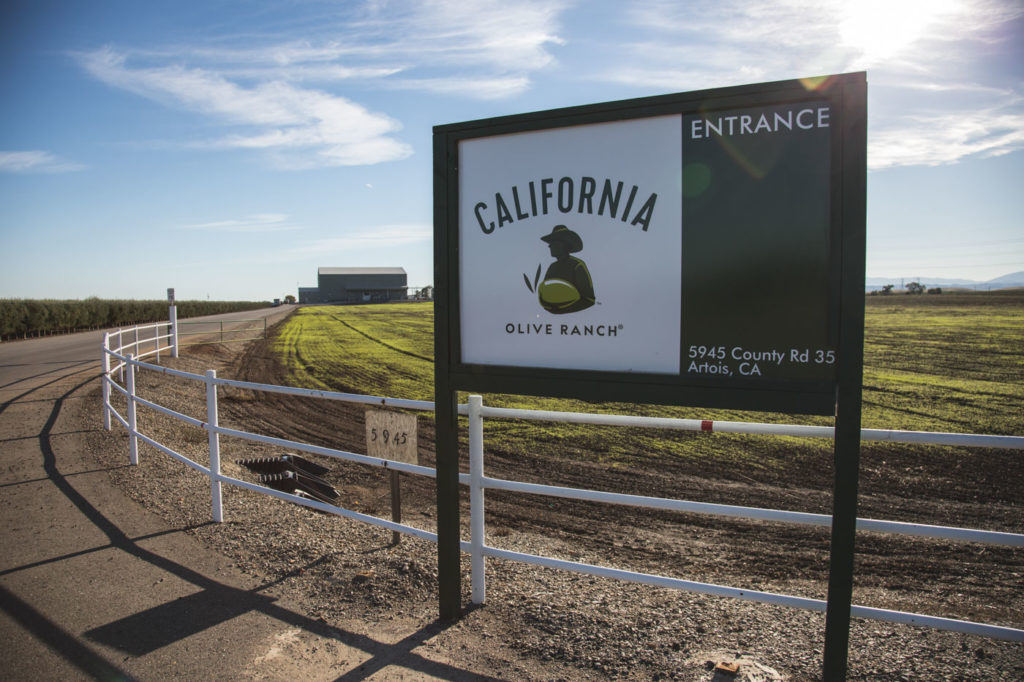
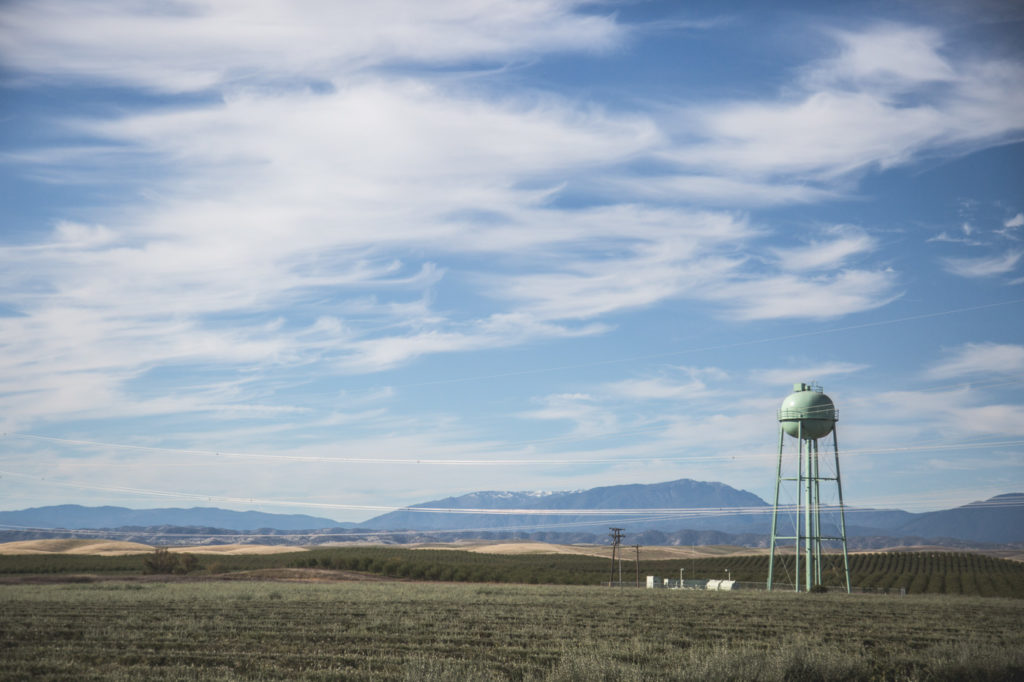
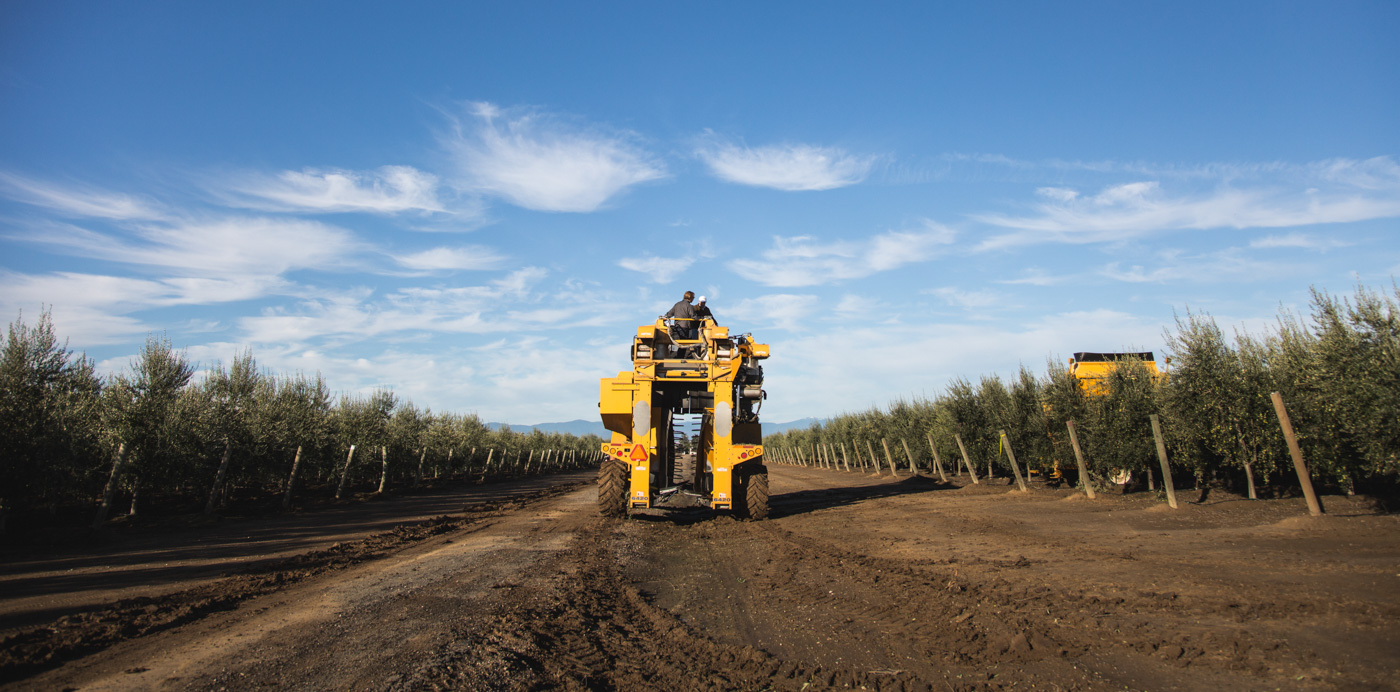
“95% of what we consume in this country is imported, and some of that’s good, but the bulk of it’s not,” says Mayo Ryan, the VP of Agriculture at that California Olive Ranch. They hope to change all of that with a singularly focused mission: “All we do here is a high quality extra virgin olive oil.” It’s an effort that has guided the company since its founding in 1998.
The inception of California Olive Ranch was good timing for the culinary world, which, as it evolved, began paying closer attention to each ingredient. With increased discernment in choices for every dish, oil naturally emerged as a focal point for those most passionate about food. No longer was it simply a liquid for frying––it was not just functional, but critical to the flavors they aimed to achieve. Today, we have access to finishing oils that brighten and bring out the nuances of a dish. In restaurants, we find it in delicate dabs floating on the surface of soups, spiked with preserved lemon or rosemary and applied to pasta or roasted chicken, on the dessert menu in the form of olive oil cake––even drizzled over or infused into artisanal ice creams. The country’s top chefs aren’t shy about calling out their favorite brands and varietals on menus; they’re championing olive oil as a main ingredient deserving of recognition. And because it’s such an important feature in their food programs, culinary professionals are learning the intricacies of the product, paying attention to its selection and production, the same way they would when choosing produce or protein.
And all that fuss is what brought one such group of formidable chefs to Northern California on a sunny but brisk November morning. The orchard floors were thick with mud from weeks of rain, an obstacle for those of us on foot, but the harvesters at California Olive Ranch were fired up and in full motion when we arrived on the farm at 7 a.m. Just as they had been since beginning. Just as they will be 24 hours a day, seven days a week for the approximately 45 day duration of the harvest.
We first toured their fields with Mayo, and then their facilities with VP of Operations Jim Lipman, to catch a behind the scenes look at a centuries-old practice being effectively modernized by a decades-old company. Mayo, a fourth generation agriculturalist (his family farmed cotton) with an MBA in agribusiness, takes us on a trip through time and culture, navigating the mucky terrain. He cordially lends a hand and cautions our steps as we disembark his pickup, offering his concern for my boots in the mud. “Those, look like nice shoes,” he says. “I’m sorry!” He apologizes on behalf of Mother Nature, which is of course, above his station.
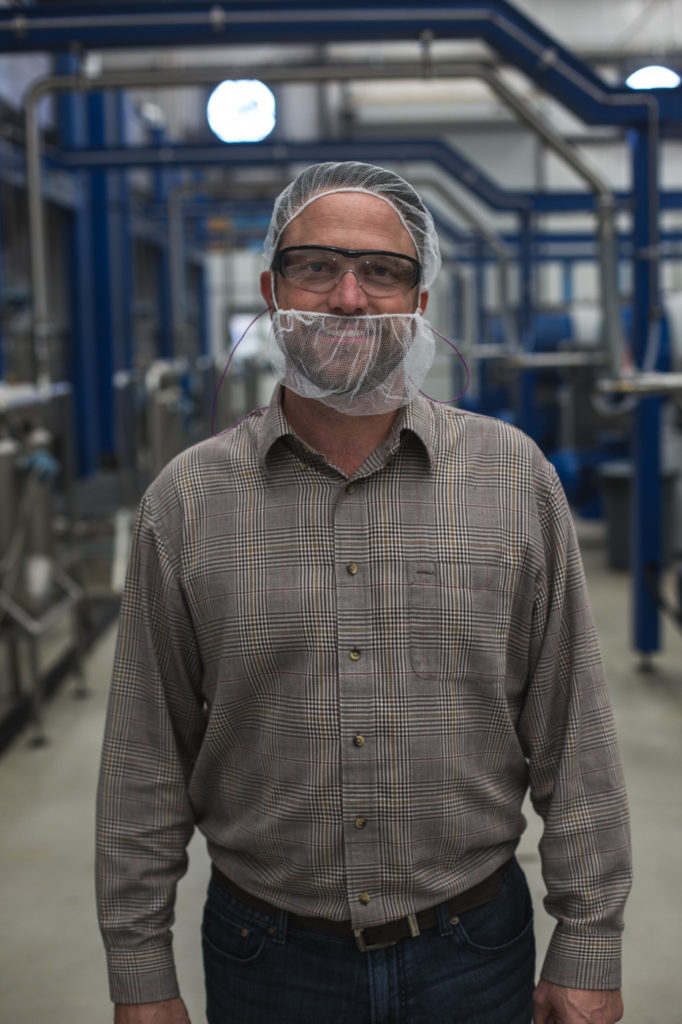

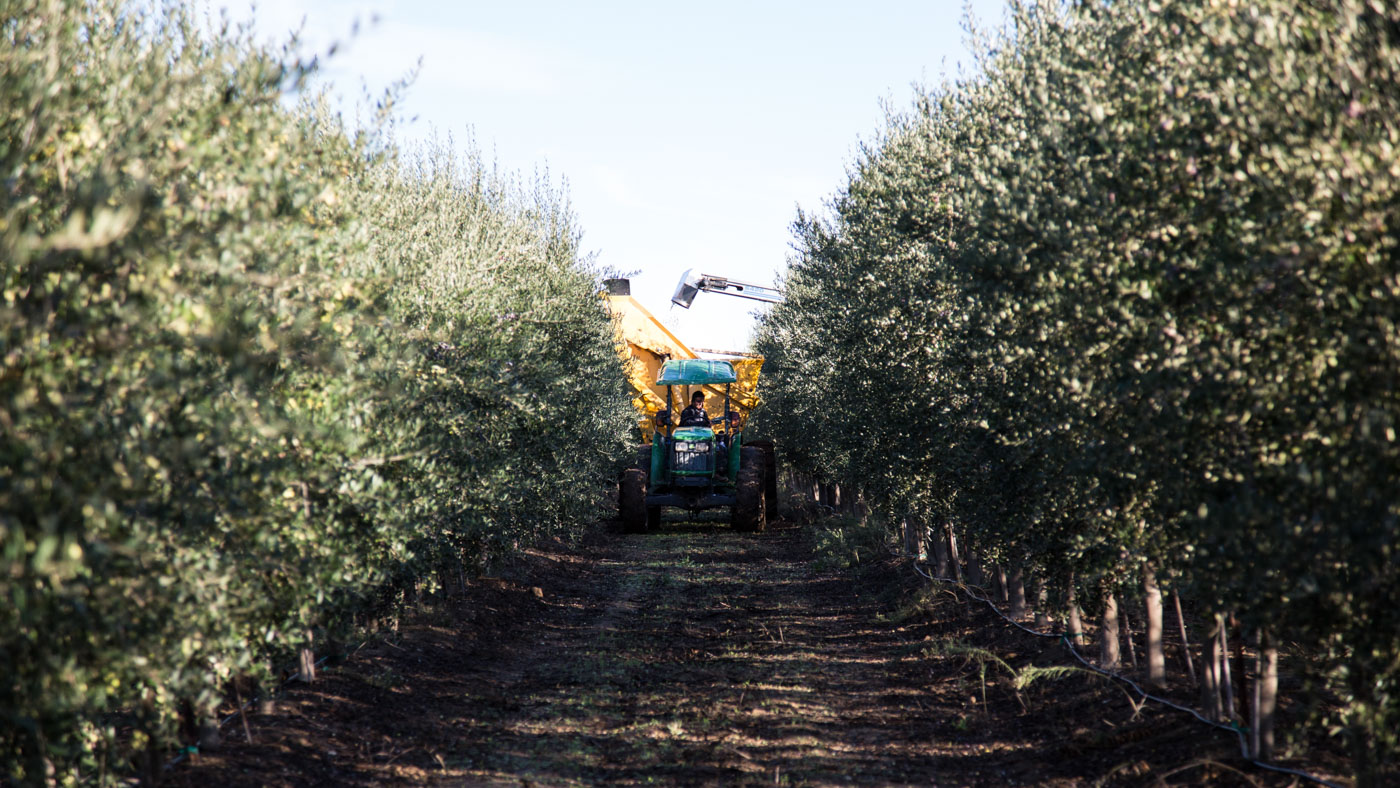
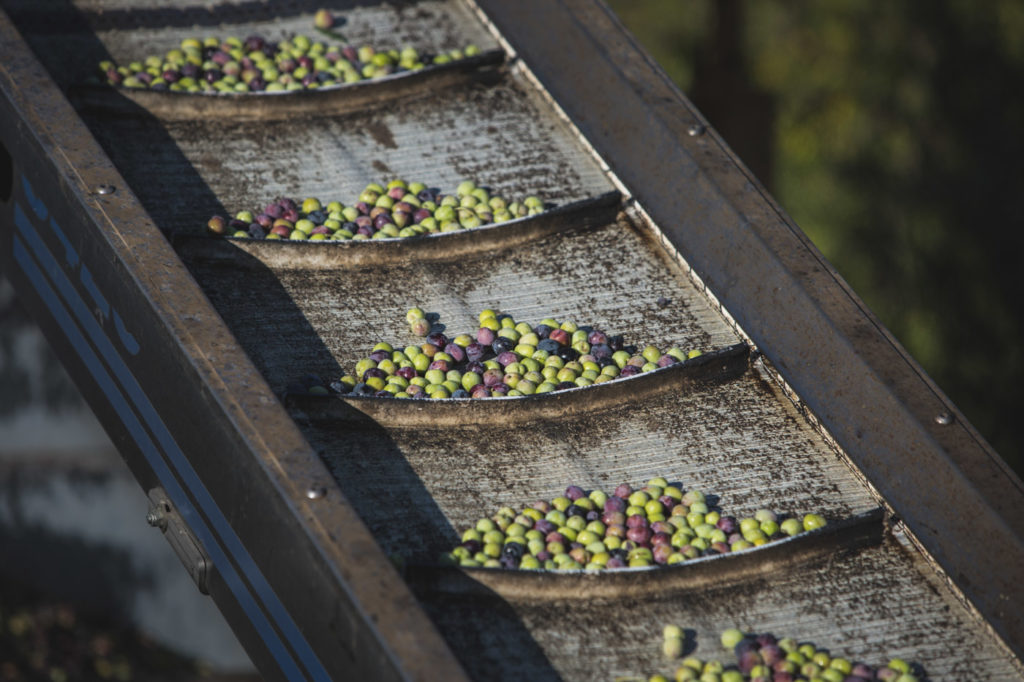
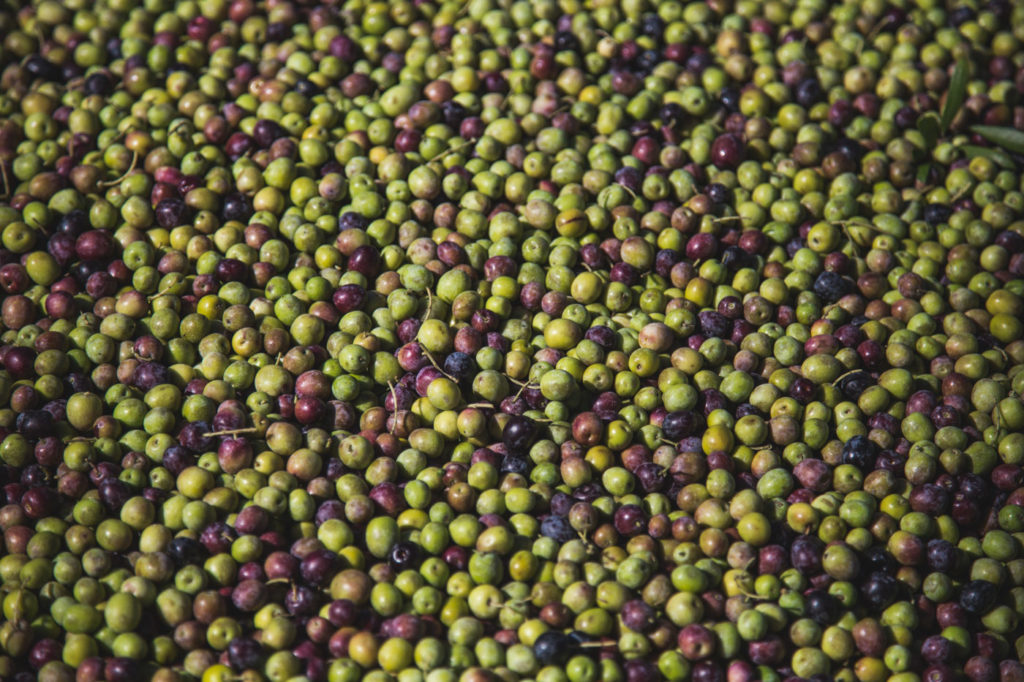
Once on somewhat solid ground in the orchard, Mayo guides us through California Olive Ranch’s meticulously honed mechanical harvesting method. By this point in the season, harvest at California Olive Ranch is well underway; it began early in October––a date designated by the conclusions of a late-summer analysis of the fruit. In August, the olives were evaluated for fat, moisture, maturity and sizing, and a computerized database tracked the information as they approached harvest. An eye was kept on fat accumulation in the olive and as it climbed, it was compared with year-over-year statistics to estimate when ripeness would plateau, and harvest could begin.
California Olive Ranch has been a pioneer in machine-harvesting, which has allowed them to be considerably more prolific than if they were to utilize a traditional, hand-harvesting method. Working directly with Oxbo, a manufacturer of agricultural equipment, the company has been instrumental in developing olive-specific harvesters (originally, they used harvesters designed for wine grapes, so it’s no surprise to hear Mayo discuss the process in terms that wine folks wouldn’t find unfamiliar. The phrases “old world” and “new world” are applied here, but to viscous green rivers rather than goblets of reds or whites).
It also gives California Olive Ranch an opportunity to offer high quality bottles of olive oil at prices not typical for specialty products. When hand-harvested, whether for canning or extra virgin oil, it costs about $1600 per acre for harvest alone. At COR, that cost is $300 per acre. “Our entire annual production costs are less than what it costs to hand-harvest a tree,” Mayo explains, accounting for how the company is able to purvey fresh, domestically produced oil that can be stocked on grocery store shelves around the country for a fraction of what an imported or specialty oil would fetch.
Fortunately, the fruit is hearty and doesn’t require a painstaking, highly laborious hand-picking as something like a peach or fig; they fair well under the arms of the massive harvester. When I relieve a handful of olives from their sun-soaked trees and break their skin, the fragrance is intense, instantly identifiable as the same one that emanates from many of my favorite dishes. But that heady aroma is volatile, which is why at COR, it’s a mere matter of hours before each marble-sized green and red bead will have been transformed into gallons of extra virgin olive oil.
The process is swift; once the olives have been safely collected, the haul is weighed (each load is 25 tons; the yield is about 40 gallons per ton) and then transferred for milling. “We start grading and tasting the olive oil before it hits the mill,” Lipman explains. As the cargo makes its way from truck to mill via conveyor, moo (that’s “material other than olives” to you) is removed. We watch as workers stand at attention, ready to sort out twigs and branches by hand, as batches of olives whip by.
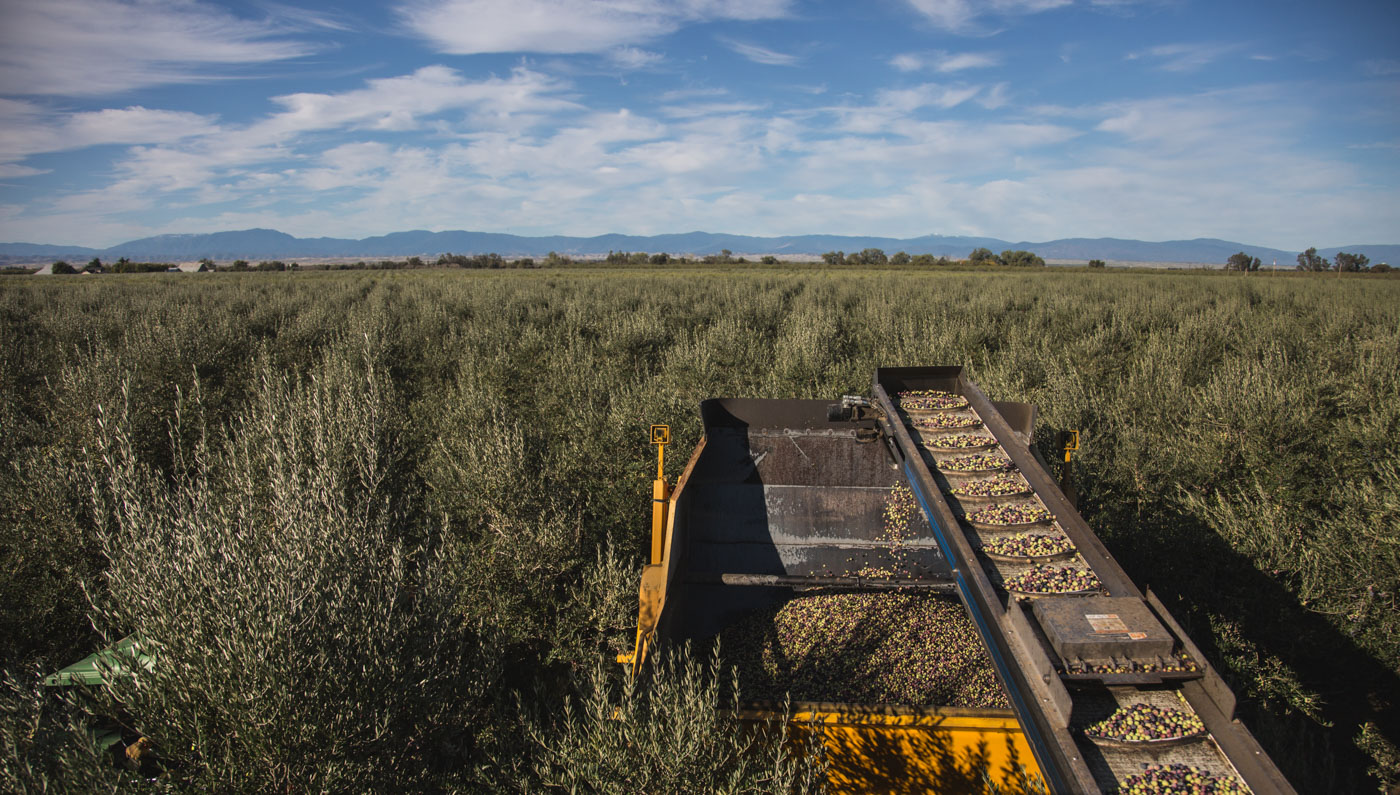
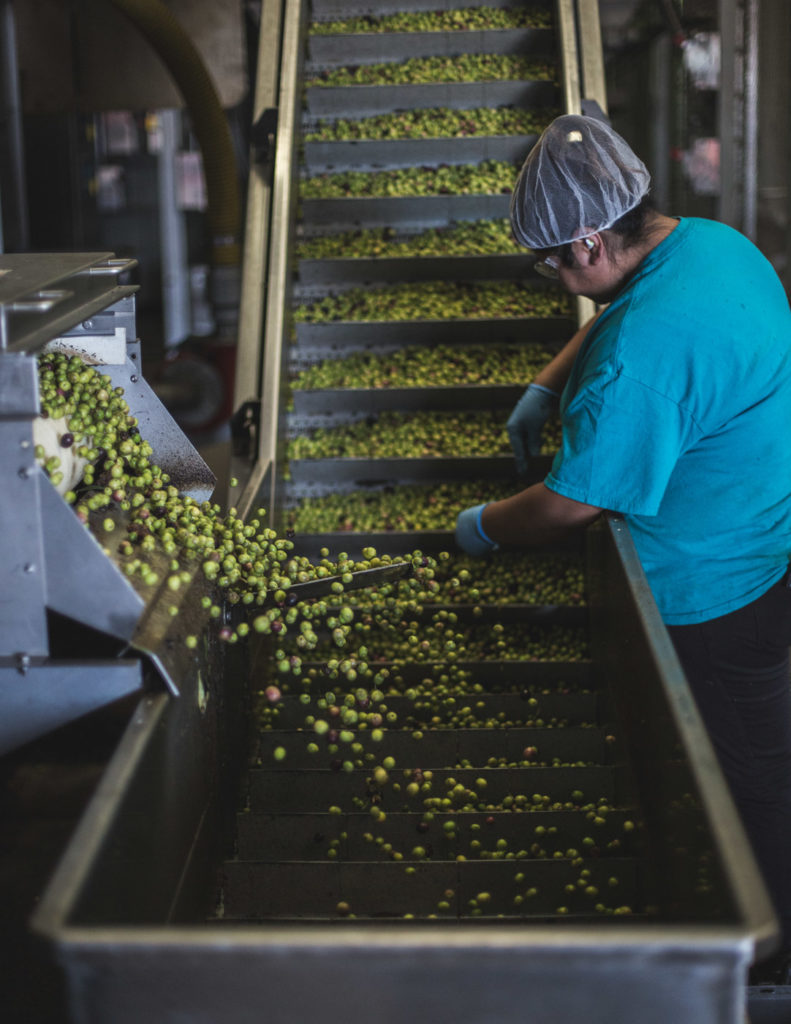
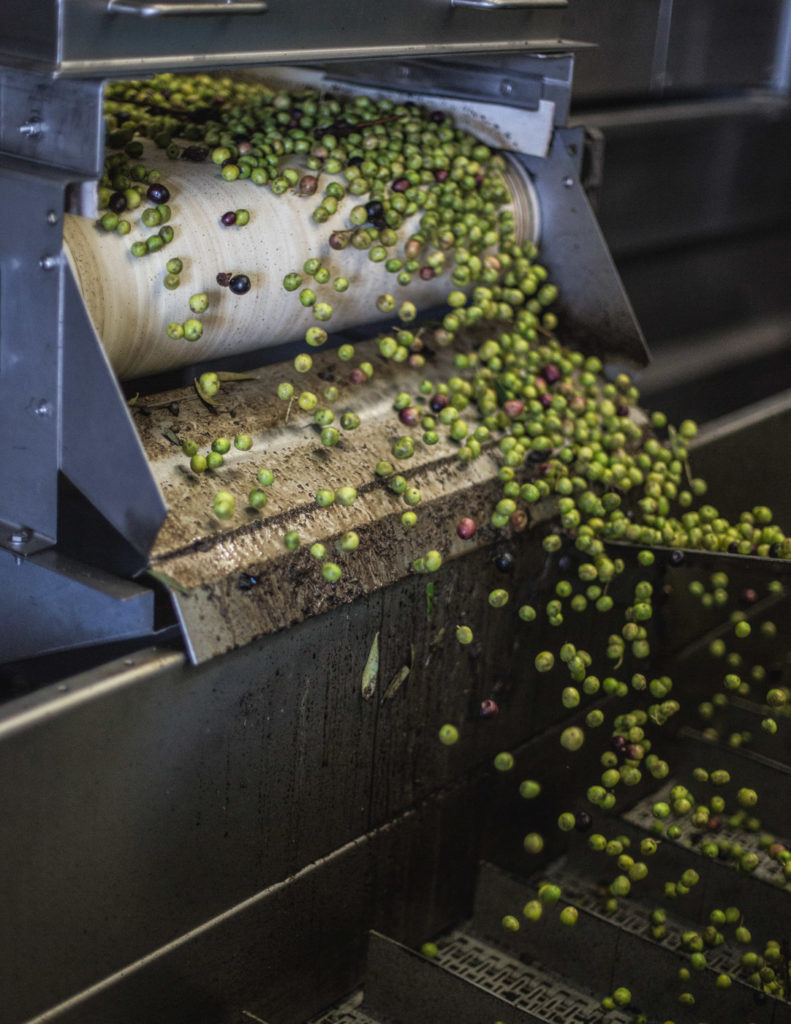
In the next step, the fruit is introduced to a hammer mill, “which is the smallest machine in the plant, but the most critical,” Jim explains. The science of extraction and the efficiency with which the oil is culled is determined inside that machine. The oil is housed in the cells of the olive, Jim explains as we congregate in his small laboratory. “We’re trying to break that cell wall so the oil can be extracted.” In the hammer mill, a set of hammers forces the olives through a series of screens with small holes. The shear applied to the oil must be applied at a pressure that will make for efficient extraction, but not lead to emulsification.
What results from this process is a paste which is then pumped into a malaxer. Jim explains that this mechanism “relaxes” the paste. “It breaks all the components of the paste up, makes the oil more available for extraction,” he explains. No chemicals or heat are applied during this process, an important distinction in what can be termed extra virgin.
The soon-to-be oil goes into a decanter next. Jim describes the machine “like a front-load washing machine. It spins, and by its weight, it separates everything.” Water and oil are removed from the paste and then transferred to a centrifuge that further separates the oil from water.
The process, which culminates in a dizzyingly active bottling line, is astonishingly efficient. And while the harvest and the process are mechanized, a human touch is critical to quality control measures–checks and balances taken at each step. In addition to ensuring that there is no opportunity for degradation on the journey from branch to bottle, flavor determination is a focus. “Along the way we taste the olives, and we’ll take that olive oil as either mild, medium, or intense robust.”

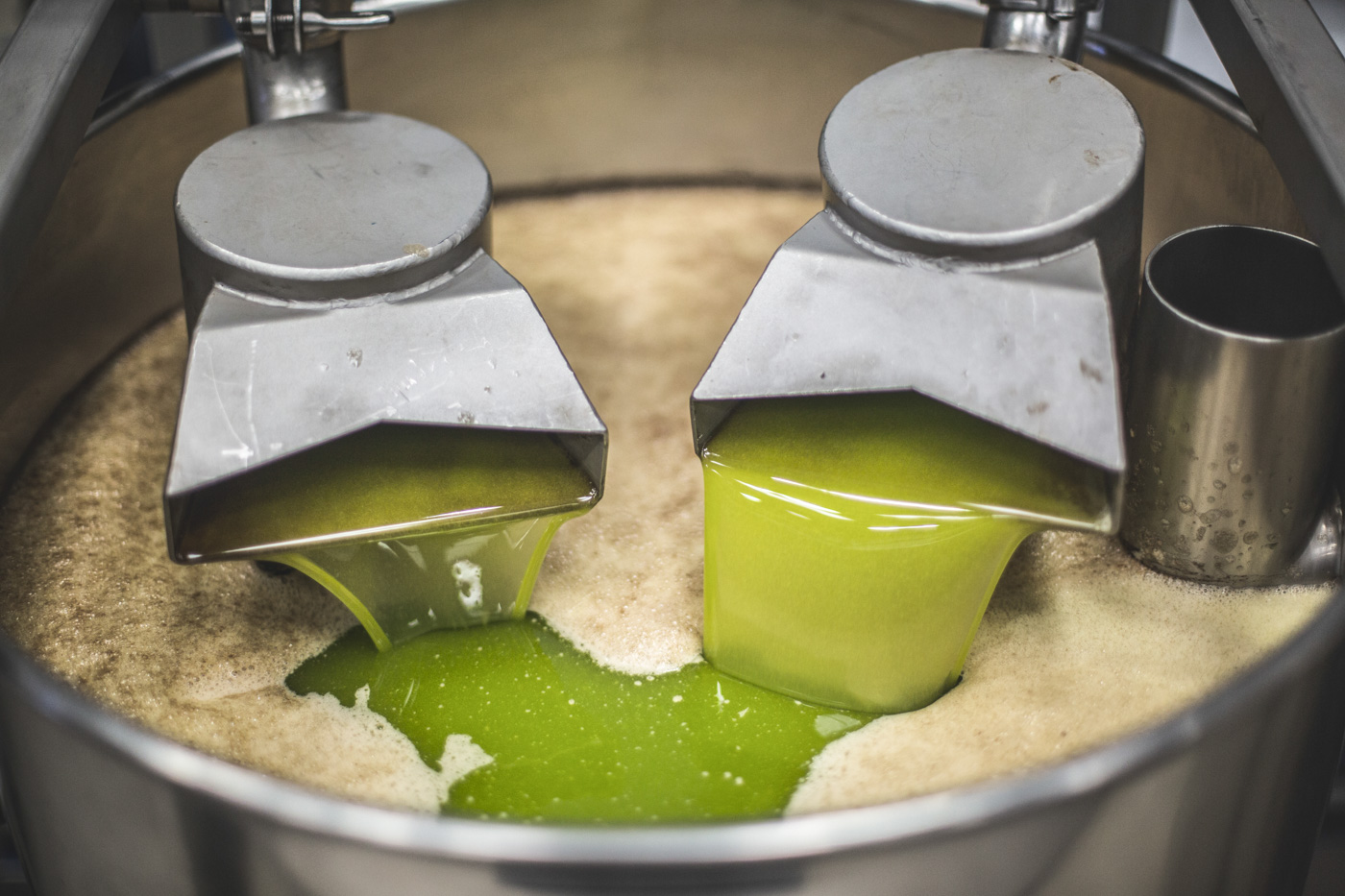
At California Olive Ranch, three varieties of olives are used to create their product line––Arbequina, Arbosana, and Koroneiki. The former is the mildest of the three, and according to Mayo, they increase in intensity. Because olive oil naturally becomes more mild with time, the latter is typically blended in last, bringing back a pungent kick to round out the flavor profile.
Mayo takes a special delight in the reaction of surprise–one that is still the instinct of many have when they taste fresh, quality olive oil. With flavor notes ranging from tropical fruit and green banana to almond, artichoke or green apple, it’s an experience many haven’t had with their ages-old pantry bottle. “It’s really fun to see them open it up and say, ‘This is what fresh olive oil should really taste like.’”
From the time the olives leave the trees, it will be only four to five hours until they’re transformed into streams of greenish-gold liquid. The intensities in both flavor and aroma when we taste through later at lunchtime is obvious sensory evidence of that freshness. The chefs are guided through a sampling of oils, from peppery and assertive to effortless, creamy and mild, it’s clear why more than one variety is useful for a serious cook. “We think of olive oil like we do wine. I probably have half a dozen olive oils on my shelf right now,” Mayo says of his home collection.
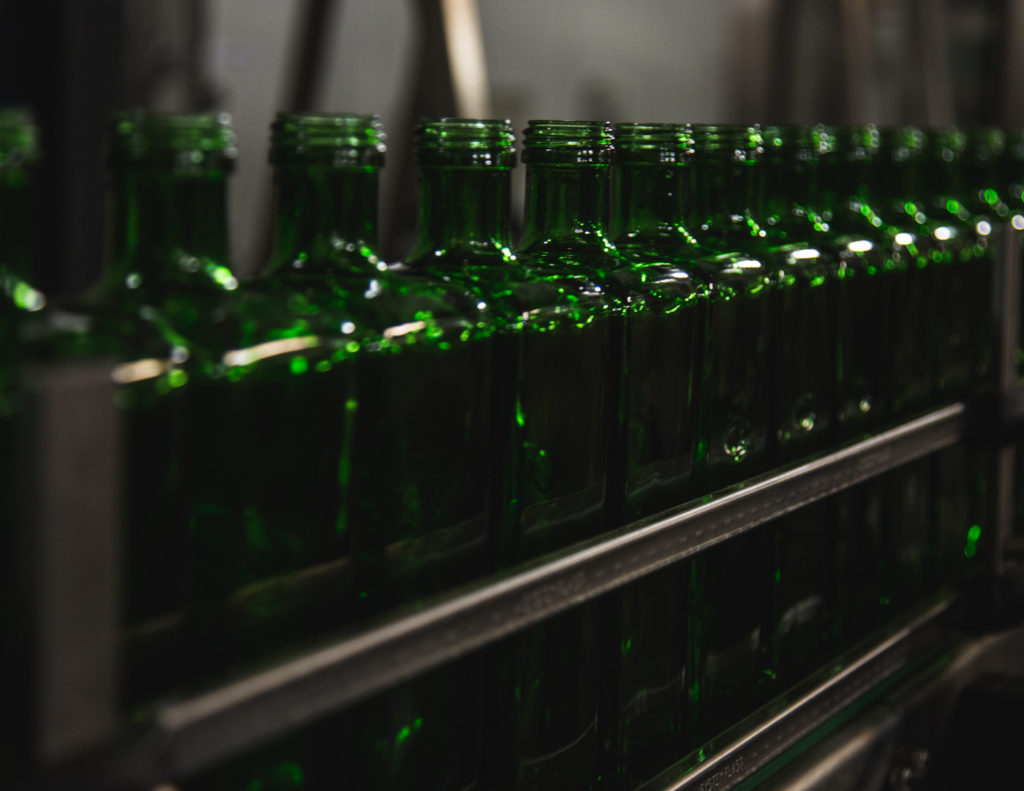
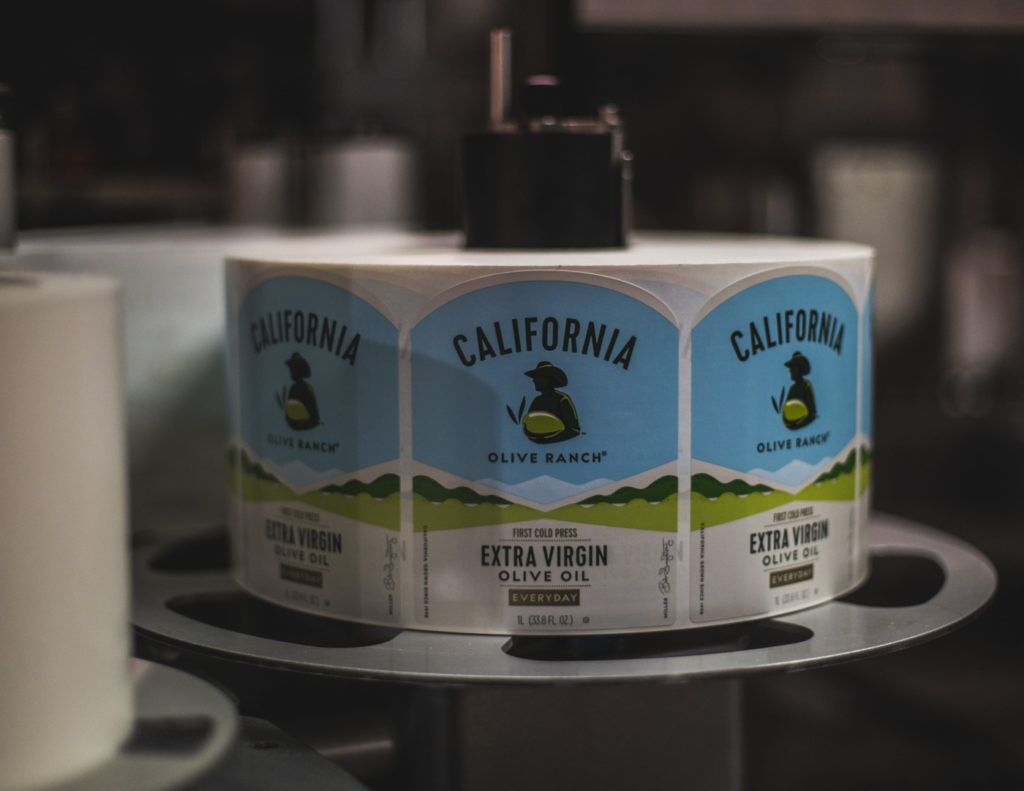
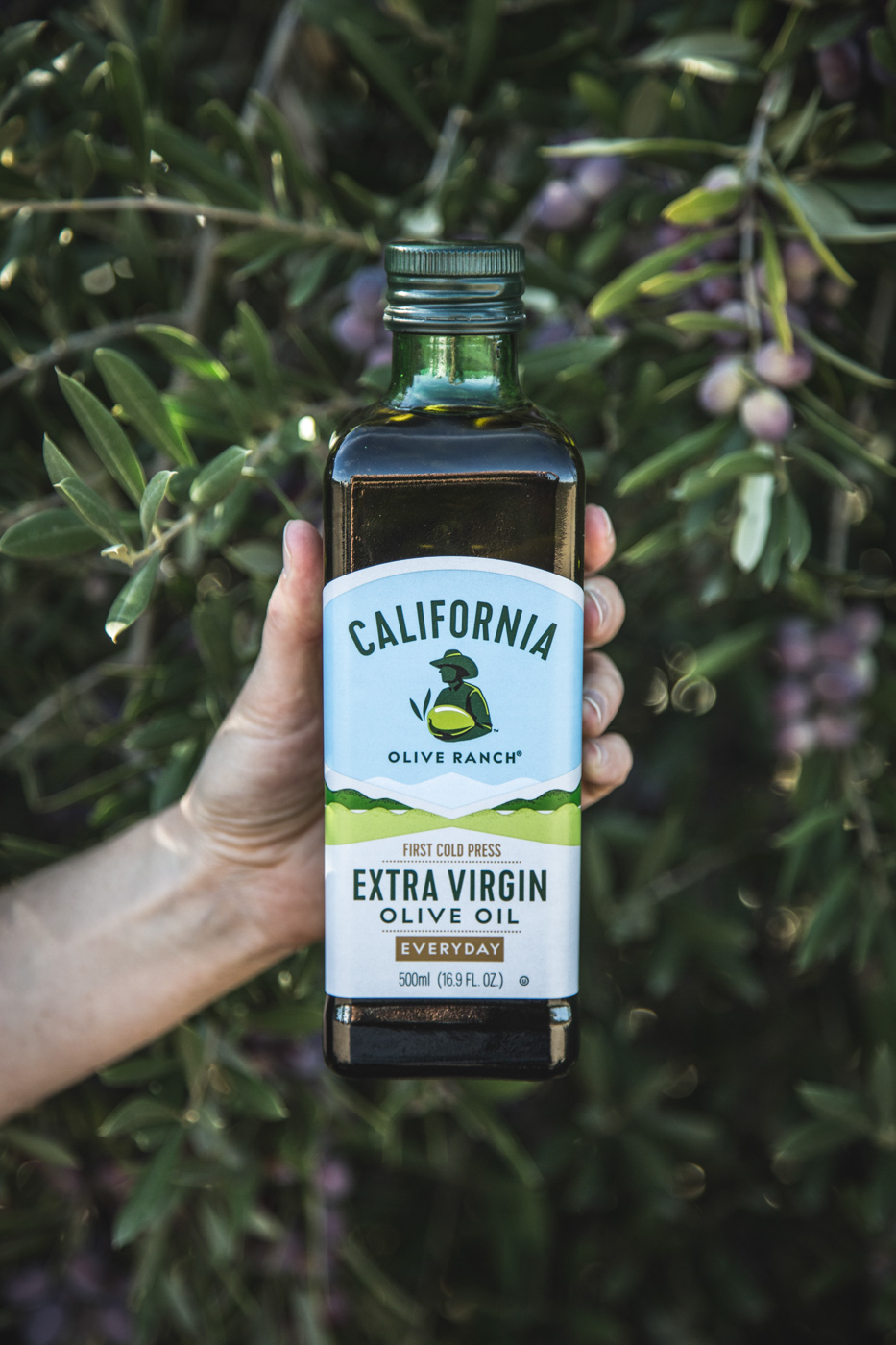
At California Olive Ranch, there is a hope that this revelation follows more than just accomplished restaurant professionals–that a domestically produced, readily available oil like their theirs can be appealing to home cooks as well, once its virtues have been proven. To the cooks that store up the good stuff, saving it for a rainy day, or a really special dish, Mayo encourages less restraint. “Use it, don’t keep it! Pour it on everything. Use olive oil as an alternative to butter. We don’t drizzle, we pour. It enhances the flavor of a lot of things.”
The chefs at dinner time heartily agree, as we pass between us a selection of dishes that prove the point–scallop crudo, cauliflower soup with coffee-infused oil, roasted root vegetables and racks of lamb, each representative of the COR mission by delicious example.
“Olive oil is fresh fruit juice––it’s like orange juice or apple juice––it’s wonderfully flavorful. It can be fruity and fun and nice,” Mayo extols. “We put olive oil on ice cream in our house with sea salt. It’s great. Who would have thought?”
Sourced Material
1 Hort Science
2 Olive Oil Times
3 AOOPA





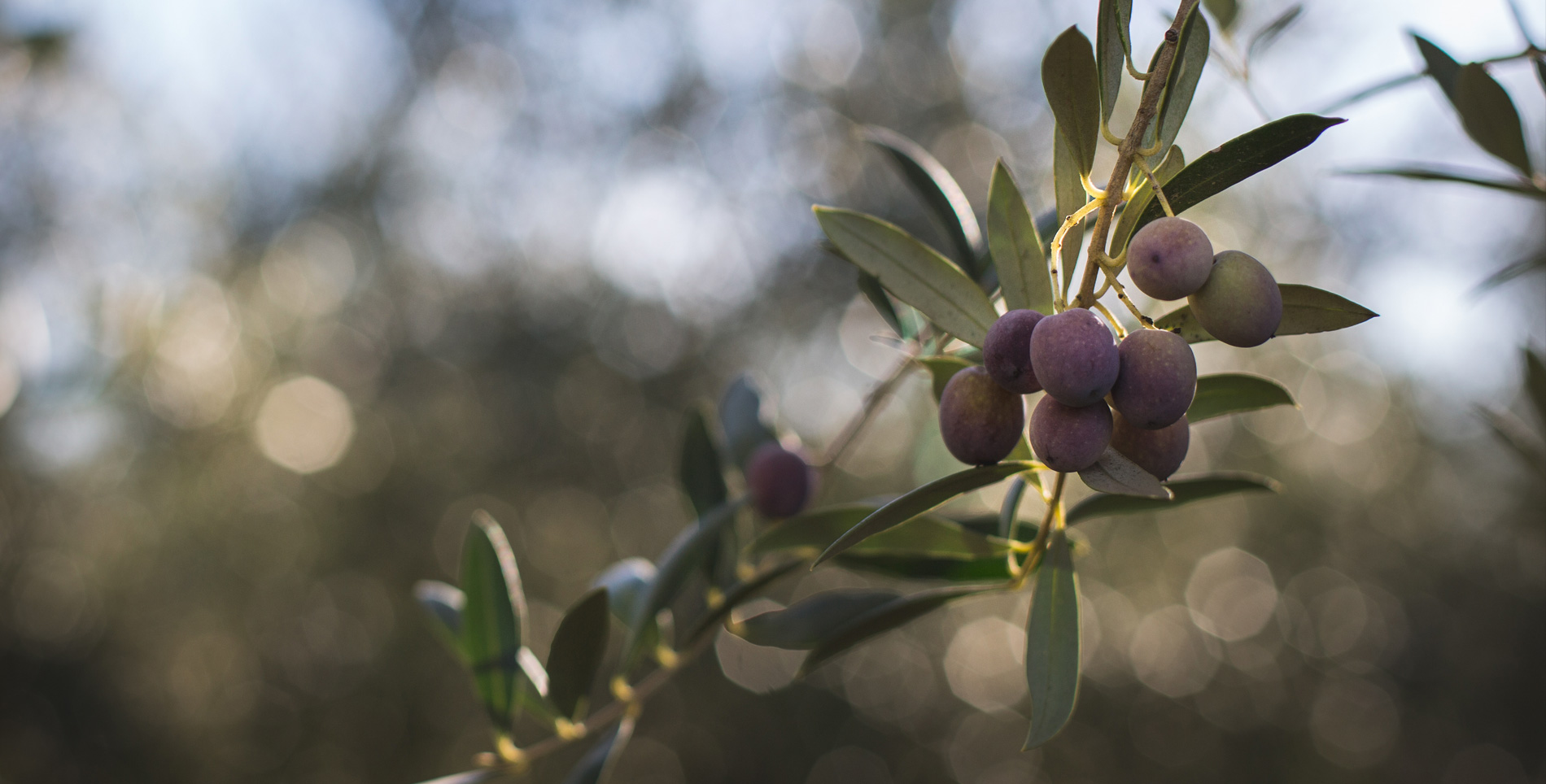
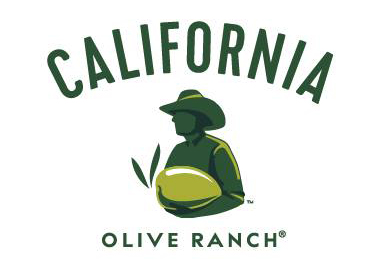

Our comments section is for members only.
Join today to gain exclusive access.